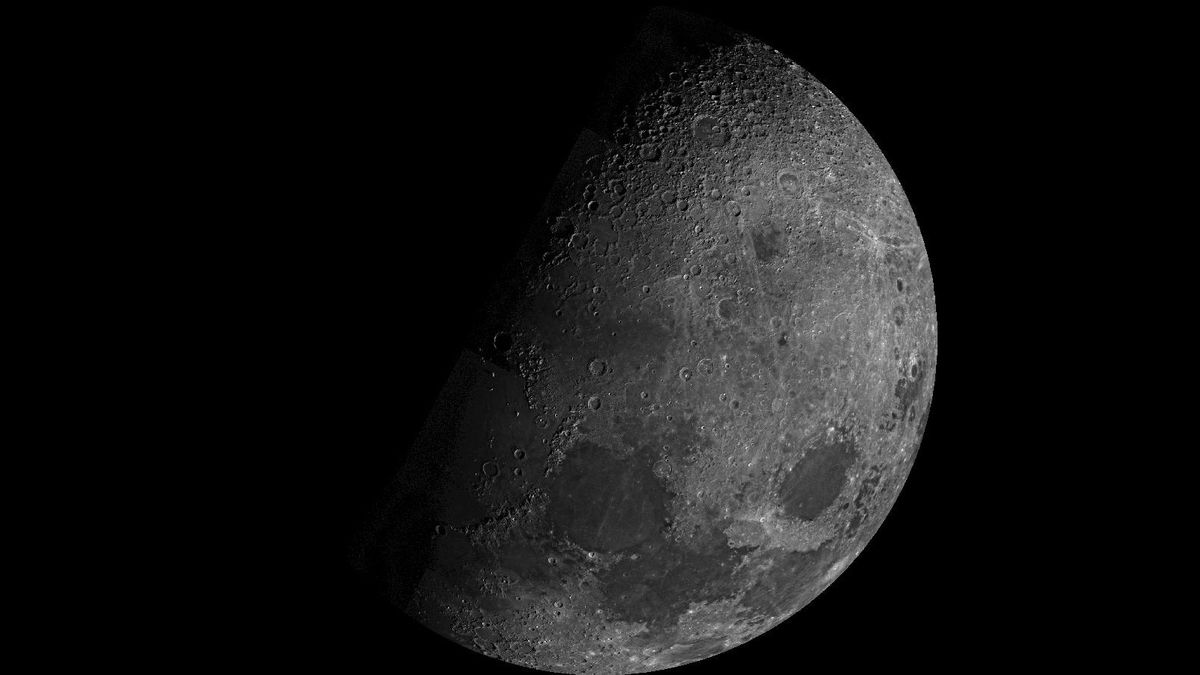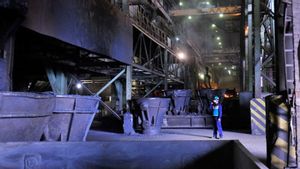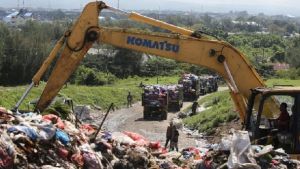JAKARTA - Just like iron, it turns out that the Moon can rust. Scientists are puzzled by this, which should not be possible, because there is no oxygen on the Moon. One of the two important elements for the creation of rust is water.
Evidence of rust was first discovered by Chandrayaan-1, an Indian rover orbiting the Moon, since 2008. The plane collects data that has resulted in many discoveries over the years, including revealing that there are water molecules on the surface of the Moon.
The plane also carries a NASA instrument that can analyze the mineral composition of the Moon. When researchers at NASA and the Hawaii Institute of Geophysics and Planetology analyzed the data, they were stunned to discover hematite, a reaction to the form of iron oxide known as rust.
This is quite confusing, because as is known there are many iron-rich rocks and minerals on the Moon. But rust oxidation is only produced when iron is exposed to oxygen and water.
"At first, I didn't believe it at all. It shouldn't exist based on the conditions on the Moon," said Abigail Fraeman, a scientist at NASA's Jet Propulsion Laboratory, in his official statement quoted by FOX News, Tuesday, September 8.
It is known that rust is produced when oxygen removes electrons from iron. Hydrogen does the opposite by adding electrons, which means that it is harder for rust to form on the hydrogen-rich Moon.
"It is very confusing. The moon is a terrible environment for hematite to form," said lead author Shuai Li.
After months of research, Li and NASA scientists found the answer: it is located on our own planet. Because rust is more concentrated on the side of the Moon that faces Earth, these clues suggest that it is related.
The earth is covered in a magnetic field, and the wind on the Sun stretches these bubbles to make the magnetic tail lengthen in the opposite direction of the wind. Later, the Moon will enter this tail in the three days before the full moon, and it will take six days to cross the tail and come out the other side.
According to scientists, for six days, Earth's magnetic tail will cover the surface of the Moon with electrons, and all kinds of strange things can happen. Dust particles on the Moon's surface may drift off the ground, and Moon dust may fly into dust storms.
Our Moon is rusting. Using data from a @NASAJPL instrument aboard @ ISRO's Chandrayaan-1 orbiter, scientists were surprised to find evidence of a form of iron oxide, or rust, produced when iron is exposed to oxygen and water: https://t.co/gxupT31bFI pic.twitter.com/mPoRPhjWoF
- NASA (@NASA) September 6, 2020
Li speculates that oxygen from Earth moves with this magnetic tail to land on the Moon, where it interacts with the Moon's water molecules to create rust.
The magnetic tail also blocks nearly all of the solar wind during a Full Moon, meaning the Moon is temporarily shielded from hydrogen explosions, opening a window for rust formation.
"Our hypothesis is that the Moon's hematite was formed through the oxidation of lunar iron by oxygen from the Earth's upper atmosphere which was continuously blown onto the Moon's surface by the solar wind while the Moon was in Earth's magnetotail for the past several billion years," explained Li.
"This discovery will reshape our knowledge of the polar regions of the Moon. The Earth may have played an important role in the evolution of the Moon's surface," concluded Li.
The English, Chinese, Japanese, Arabic, and French versions are automatically generated by the AI. So there may still be inaccuracies in translating, please always see Indonesian as our main language. (system supported by DigitalSiber.id)













